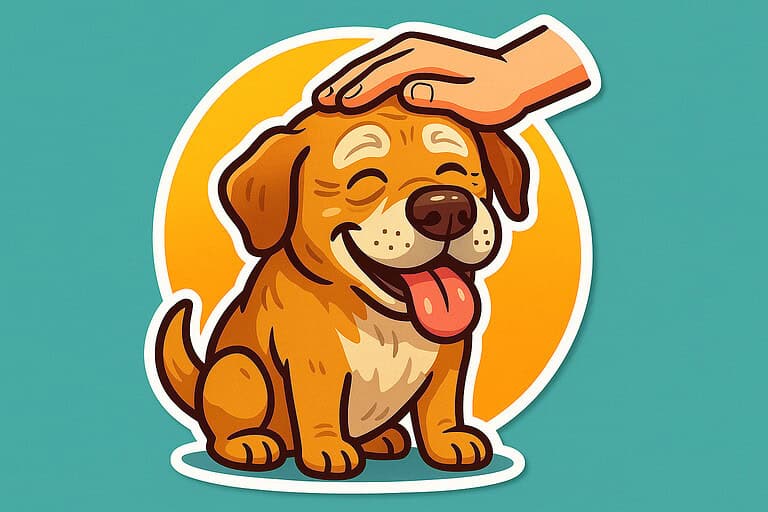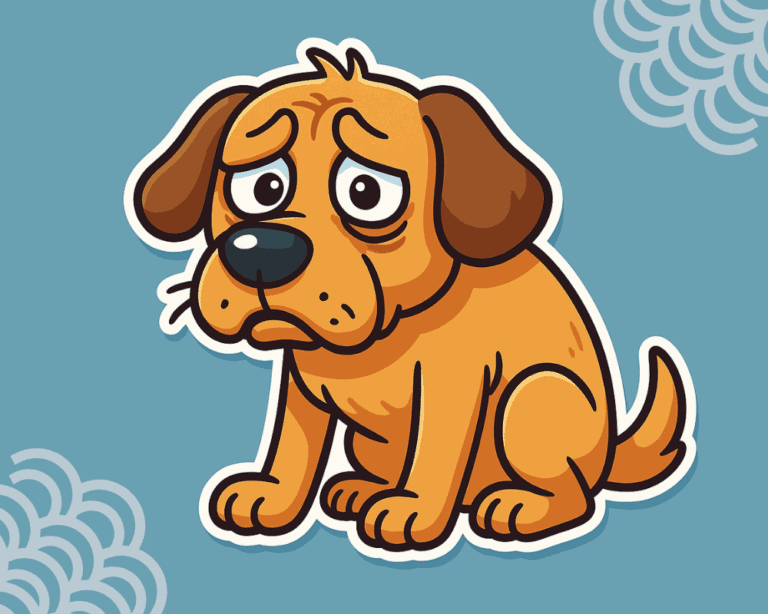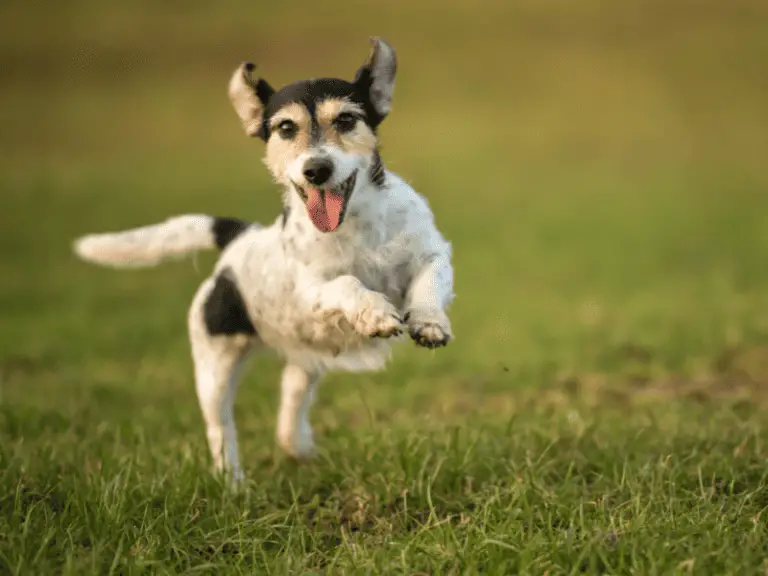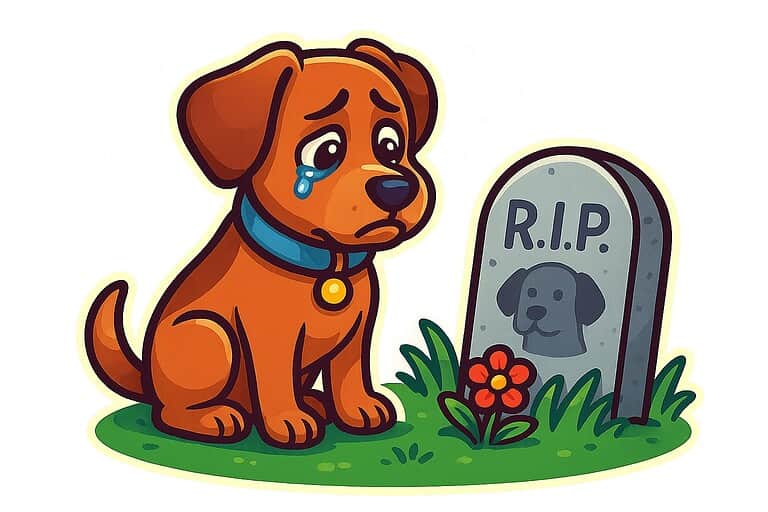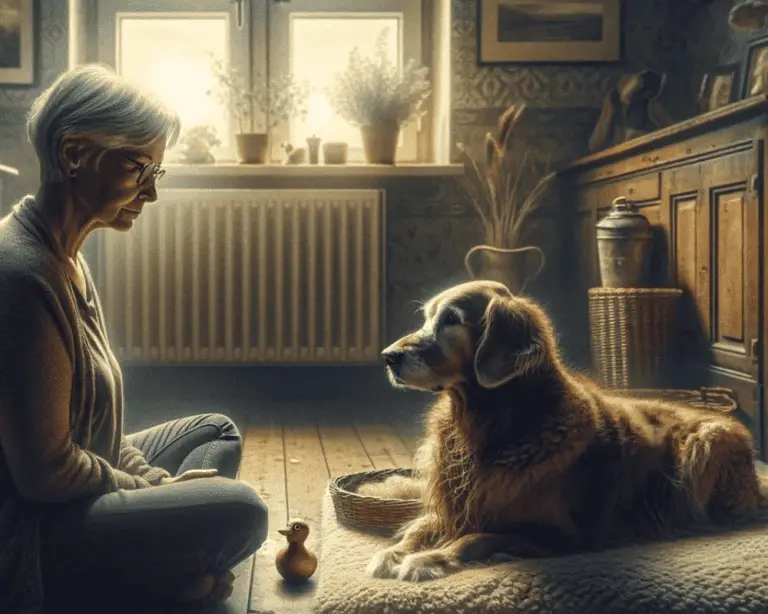Common Myth: Senior Dogs Should Take It Easy
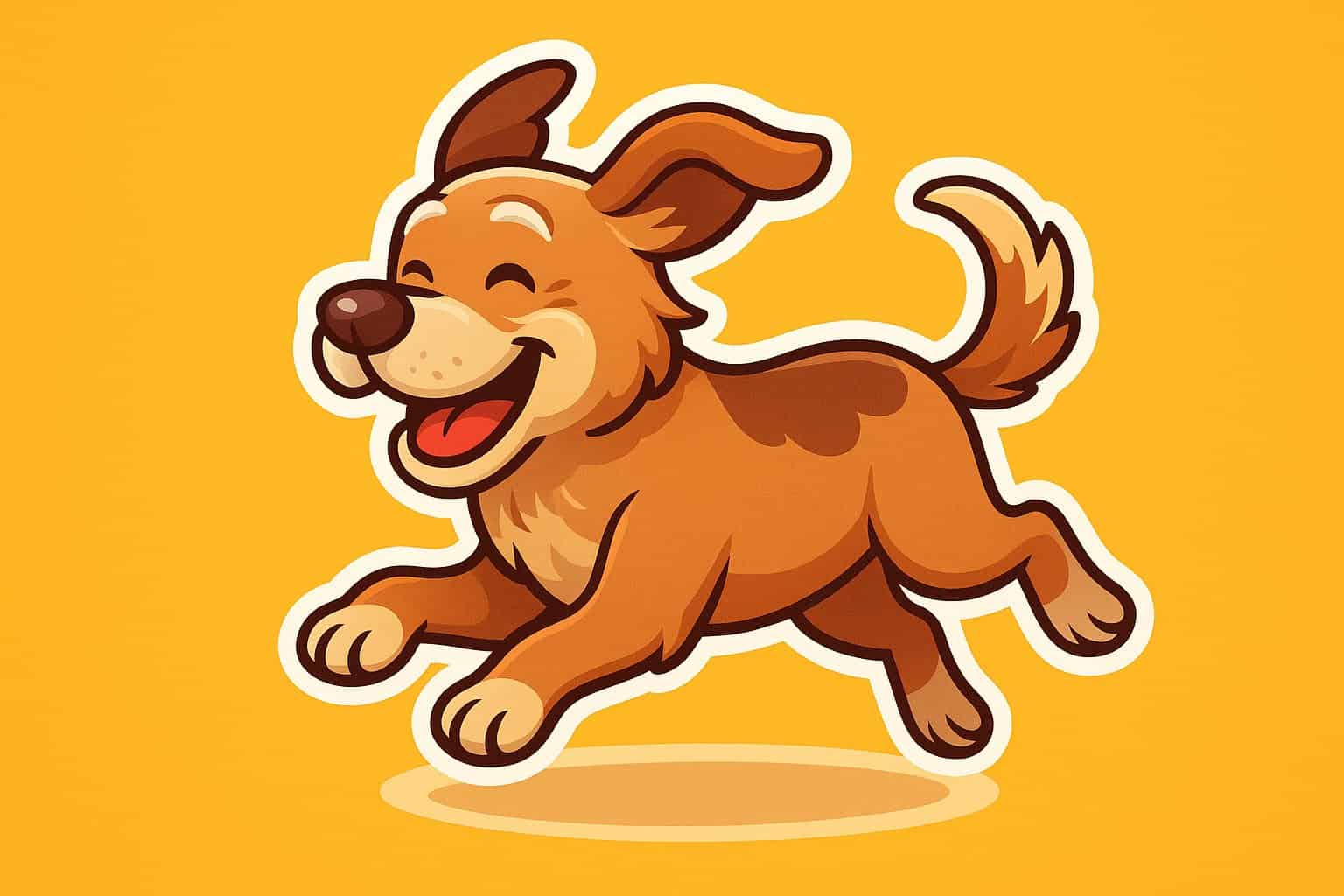
You’ve probably heard this at the dog park, or maybe your vet tossed it out during a visit: senior dogs should slow down and „take it easy.“ On the surface, it makes sense. Aging brings changes, and we all want to protect our furry friends from overdoing it.
But honestly, keeping your senior dog active is often one of the best things you can do for their health—physical and mental. Sure, older dogs need different care than puppies, but turning them into couch potatoes? That can actually lower their quality of life. Regular movement keeps their muscles strong, their joints flexible, and their minds sharp.
If you’ve been overly cautious about exercise with your older pup, you’re definitely not alone. The trick isn’t to eliminate activity, but to adapt it. Small changes in routine can make the difference between a thriving senior dog and one who declines way too soon.
Understanding Senior Dogs and Aging
Senior dogs change as they age, but the timing depends on their size and breed. Most dogs hit „senior“ status somewhere between 6 and 9 years old. These changes—physical and mental—are just a normal part of growing older.
What Counts as a Senior Dog?
„Senior“ means different things depending on your dog’s size. Large breeds like Great Danes and Newfoundlands are seniors at about 6-7 years old. Medium breeds usually hit that milestone at 7-8 years. Small breeds often don’t become seniors until 8-9 years.
Size matters because big dogs age faster. A Newfoundland might seem old at nine, while a Chihuahua could still act like a puppy.
Your vet can help you figure out when your dog officially becomes a senior. They’ll look at more than just age—things like energy, health, and any new conditions.
Some dogs show their age early. Others keep bouncing around long after you expect them to slow down. Every dog is unique.
How Dogs Age: The Basics
Dogs don’t age at a steady rate. That old „seven dog years equals one human year“ rule? Not even close.
Puppies age super fast in their first two years. A one-year-old dog is like a 15-year-old human. By two, they’re about 24 in human years.
After that, things slow down. Most dogs age about 4-5 human years per calendar year. Smaller dogs age even slower once they hit their senior years.
Different parts of your dog’s body age at different rates. Sometimes their mind stays sharp while their joints or heart slow down. You might notice your dog’s brain still works great, even if their body can’t keep up.
Common Physical and Behavioral Changes
Senior dogs go through all sorts of changes. Physically, you might see:
- Gray fur around the muzzle
- Stiff joints, especially early in the day
- Sleep pattern changes
- Slower movement, less jumping
- Weight gain or loss
Behaviorally, your dog might get clingier or want more attention. Some become a bit cranky about changes to their routine.
Older dogs often sleep more during the day. Accidents in the house can happen, even if they’ve been house-trained forever.
Vision and hearing tend to fade gradually. Maybe your dog doesn’t come when called, or bumps into things now and then.
Most of these changes happen slowly, so you and your dog can adjust together.
Myth Busting: Do Senior Dogs Really Need to Slow Down?
A lot of people think older dogs should mostly rest, but this idea can actually backfire. Activity and mental stimulation matter just as much—sometimes more—as your dog gets older. Their exercise needs change, but they don’t disappear.
Where Did This Myth Come From?
We want to protect our aging dogs, so we encourage them to rest when they seem slower or nap more. It feels logical.
We also project human aging onto dogs. When people get older and slow down, we assume dogs should too. But dogs just don’t age like humans.
Old-school veterinary advice played a part. Years ago, vets often told owners to limit activity for older pets because treatment options were limited. This made inactivity seem safer.
Many owners worry that exercise could make arthritis or other issues worse. This worry comes from love, but it’s often not accurate. The right kind of activity actually helps manage many age-related problems.
Why Rest Can Be Risky
Your senior dog’s body needs to move to stay healthy. Too much rest speeds up muscle loss and makes joints stiffer. Think about how you’d feel after weeks stuck in bed—not great, right?
Regular, gentle exercise can:
- Keep muscles strong and joints flexible
- Boost circulation and heart health
- Improve digestion
- Lower anxiety and depression
- Help maintain a healthy weight
Mental stimulation matters too. Learning new things or solving puzzles keeps your dog’s brain active. Ever notice how much happier your dog seems after a walk or a fun game?
The real trick is to adjust activities to fit your dog’s current abilities. Maybe you swap long hikes for shorter strolls, but stopping all movement isn’t the answer.
Risks of Too Much Downtime
If your senior dog gets too sedentary, problems can creep in fast. Muscle atrophy can show up quickly—you might notice thinner legs or more trouble getting up.
Joint stiffness gets worse without movement. Your dog might seem more uncomfortable in the mornings or struggle with stairs they used to handle easily. Less movement leads to more pain, which leads to even less movement.
Weight gain is a real risk. Extra pounds make sore joints worse, and can add to problems like diabetes or heart disease. Even a little extra weight is a lot for a dog.
Mental decline is another danger. Dogs without enough stimulation can get anxious, confused, or even depressed. They might nap all day but get restless at night, which isn’t great for anyone.
Benefits of Keeping Senior Dogs Active
Active seniors have healthier joints, sharper minds, and stronger bonds with their people. Moving regularly also helps keep weight in check, which is huge for older pups.
Movement Keeps Joints Happy
Your dog’s joints are a lot like door hinges. Leave a hinge unused, and it gets stiff. Same goes for your senior dog’s joints.
Moving around keeps joint fluid circulating. That fluid is like oil for your dog’s bones.
Walking is fantastic for joint health. Start with short 10-minute walks twice a day. If your dog feels good, add a little more time.
Swimming is even better for arthritic dogs. Water supports their weight and lets them move without strain. Lots of dogs who struggle on land absolutely love swimming.
Stretching helps too. Gently move your dog’s legs through their normal range of motion. Do this when they’re relaxed and warmed up.
Exercise Lifts Spirits
Your senior dog’s brain needs exercise, too. Mental stimulation helps prevent boredom, depression, and anxiety.
Physical activity releases feel-good chemicals in the brain. It’s the same reason you feel better after a walk—your dog gets that mood boost, too.
Puzzle toys are a win-win. Hide treats in the yard or use food-dispensing toys. Your dog has to think and move to get the reward.
Try new walking routes. Different smells and sights keep things interesting. Even changing up your regular block can help.
Short training sessions are great. Teach a new trick, or practice old ones. Five minutes is often enough for most older dogs.
Keeping Weight in Check
Senior dogs burn fewer calories than they used to. Their metabolism slows as they age.
Extra weight puts more pressure on joints. Every pound adds strain to hips, knees, and backs. This can make arthritis worse.
Regular movement burns calories and preserves muscle. Muscle burns more calories than fat, even at rest.
You don’t need marathon sessions. Consistent, daily activity is more important than the occasional long walk.
Check your dog’s weight every month. You should be able to feel their ribs easily. If you can’t, they might be gaining.
Confidence and Bonding
Active senior dogs often feel more sure of themselves. Success with physical activities builds confidence.
Doing things together strengthens your relationship. Your dog loves spending time with you, especially as they get older.
Pick activities your dog can handle. If fetch is too much, roll a ball gently instead.
Celebrate the little wins. If your dog walks a bit farther today, make a fuss over it. Maybe even offer a treat.
Group activities help, too. Senior dog training classes give your pup a chance to socialize with other calm, older dogs.
How to Keep Your Senior Dog Moving Safely
You can keep your older dog active by changing up their routine and picking gentler activities. Watch for signs that your dog needs a break.
Adjusting Walks for Older Dogs
Your senior still needs walks, but shorter and slower is better. Instead of one 30-minute walk, try two or three 10-minute walks.
Pick softer surfaces when you can. Grass is easier on joints than pavement. If you have to walk on concrete, keep it short.
Let your dog set the pace. Maybe they want to sniff every tree now—that’s fine.
Weather matters more now. Hot pavement can burn paws, and cold makes stiff joints hurt more. Early morning or evening is best in summer.
If your dog gets tired halfway through, just head home. Try a longer walk next time if they’re up for it.
Gentle Activities to Try
Swimming is top-notch for seniors. Water supports their weight and lets them move comfortably. Even a kiddie pool can work wonders.
Mental games count, too. Hide treats around the house or use puzzle toys to get your dog moving without stressing their joints.
Try gentle stretches. Encourage your dog to reach for treats above their head or off to the side. It keeps them flexible.
Short training sessions are perfect. Practice simple commands like „sit“ or „down.“ Keep it under five minutes.
If stairs are tough, teach your dog to use a ramp. Walking up and down a gentle ramp builds strength without the impact of jumping.
Knowing When to Slow Down
Your dog will let you know when they need a break. Heavy panting, lagging behind, or lying down during walks are clear signs to stop.
Watch for limping or extra stiffness during or after activity. This could mean they’re overdoing it or feeling pain.
If your dog doesn’t want to get up for walks or play, don’t push. It could be a sign of a health issue—check with your vet.
Changes in appetite or behavior after exercise aren’t normal. Your dog should feel better after gentle activity, not wiped out.
Some days will be better than others. On slow days, stick to short walks or a little stretching inside.
Adapting Exercise for Senior Dog Health Issues
Older dogs often face health challenges that need some creative thinking. You can usually work around arthritis, mobility issues, or heart conditions with a few simple tweaks.
Managing Arthritis and Sore Joints
Most senior dogs get arthritis, but gentle movement actually eases stiffness and pain. Focus on low-impact activities that keep joints moving without adding stress.
Swimming is your best bet. Water supports your dog’s weight and provides gentle resistance. Even a backyard kiddie pool can help.
Short, frequent walks work better than one long one. Try three 10-minute walks instead of a single 30-minute stroll. This prevents fatigue and soreness.
Warm up and cool down every time. Let your dog start slow for a few minutes, then ease out of activity with gentle stretching or a little massage.
Soft surfaces are easier on joints. Grass or sand beats concrete. If you have to use hard surfaces, try cushioned booties.
Cold weather can make arthritis worse. On chilly days, keep walks short and consider a doggy jacket for extra warmth.
Mobility Challenges: What Helps?
Some senior dogs start to lose balance or develop weakness in their back legs. You can still help them stay active with the right approach.
Ramps and steps make outdoor access easier. Instead of leaping into the car or up stairs, your dog can walk up gradually. This takes a lot of pressure off weak joints.
Balance exercises build core strength. Try having your dog stand on a thick yoga mat or balance pad for a minute or two.
Harnesses with handles give you control without straining your dog’s neck. You can support them gently while letting them move on their own.
Physical therapy techniques work for dogs too. Gentle range-of-motion exercises help keep them flexible. Your vet can show you a few simple moves to do at home.
Pick your walking routes carefully. Skip steep hills or rocky paths. Flat, even surfaces with good traction are much safer for dogs with mobility issues.
Heart Health and Gentle Cardio
Dogs with heart conditions need exercise, but intensity matters a lot. Gentle, consistent activity beats sudden bursts of energy every time.
Keep an eye on your dog’s breathing. If they’re panting hard or seem to struggle, it’s time to stop and rest. Their breathing should settle within a few minutes.
Indoor activities let you control the pace. Slow games of fetch down a hallway or a gentle tug-of-war are great on hot days or when it’s unpleasant outside.
Mental stimulation counts as exercise too. Puzzle toys and sniffing games keep your dog busy without stressing their heart.
Keep exercise sessions short and sweet. Five to fifteen minutes of gentle movement is usually enough for dogs with heart issues. You can always spread out a few short sessions during the day.
Your vet might give you heart rate guidelines. Learning how to check your dog’s pulse helps you stay in the safe zone during activities.
Mental Enrichment Keeps Seniors Young at Heart
Your senior dog’s brain needs regular workouts just like their body. Simple puzzle games and new experiences can slow mental decline and keep them sharp.
Brain Games and Puzzle Toys
Does your senior dog seem bored or a little restless? Mental challenges might be just what they need. Their brain still craves activity, even if their body is slowing down.
Puzzle feeders are fantastic for older dogs. They stretch out mealtime and give your dog something to think about. Start with easy ones and see how your dog does.
Snuffle mats let your dog sniff out treats. This taps into their natural hunting instincts without making them move much. Hide tiny bits of treats in the fabric strips.
Try frozen Kong toys filled with soft treats or wet food. Your dog will spend a good chunk of time licking and working to get the food out. It’s a solid 15-20 minutes of mental effort.
Hide-and-seek games can be fun indoors. Start by hiding treats in obvious places in one room. If your dog gets the hang of it, you can make things a little trickier.
Keep sessions short. Ten to fifteen minutes of brain work can tire out a senior dog just as much as a walk used to.
New Experiences Without Overdoing It
Older dogs still love discovering new things, but they need gentler adventures. Finding the right balance between excitement and comfort makes all the difference.
Car rides to new places can be a treat. Even if your dog just sits and watches a busy park or beach from the car, they’re soaking in new sights and smells.
Short trips to pet-friendly stores give your dog new experiences without wearing them out. Some hardware stores or bookstores let well-behaved dogs come in. Keep these outings brief and watch for signs your dog is getting tired.
Try different walking routes in your neighborhood. New scents and sights pop up without needing to travel far. Even walking the usual route in reverse can feel new.
Meeting calm, friendly dogs can lift your senior’s mood. Arrange gentle playdates with dogs you know are patient and relaxed. End visits while everyone’s still happy.
If your dog liked training in the past, teach them one new trick. Keep it very short and use treats they go crazy for.
Warning Signs: When Less Activity Is Necessary
While senior dogs do better when they stay active, sometimes you need to pull back. Pain, illness, or injury means it’s time to adjust routines and protect your dog from further harm.
Spotting Signs of Pain or Discomfort
Dogs are experts at hiding pain, but small changes usually give them away. Does your normally energetic dog hesitate before hopping onto the couch?
Physical signs to watch for:
- Limping or favoring one leg
- Stiffness when getting up
- Reluctance to climb stairs or jump
- Heavy panting during easy activity
- Trembling or shaking
Behavioral changes can be just as telling. Maybe your dog suddenly doesn’t want their daily walk or turns around halfway through. Some dogs get cranky when you touch certain areas.
Watch their faces too. Dogs in pain often look tense or have glazed eyes. Their ears might pin back more than usual.
If your dog used to bound up stairs but now takes them one at a time, that’s a clue. The same goes for dogs who suddenly prefer sleeping on the floor.
When to Call the Vet
Some symptoms mean you should call your vet right away, especially in older dogs. Don’t wait if you see sudden changes in your dog’s mobility or energy.
Call your vet right away for:
- Severe limping or can’t put weight on a leg
- Trouble breathing during normal activity
- Collapse or fainting during exercise
- Excessive drooling or signs of overheating
- Vomiting or diarrhea after exercise
Book an appointment within a few days if your dog shows ongoing low-level symptoms. These include stiffness that won’t go away, gradually slowing down, or changes in eating after activity.
Your vet knows your dog’s history and can spot things you might miss. They can also help set safe activity levels if your dog has health issues.
If you aren’t sure, just call and ask. Most vet offices are happy to give quick advice over the phone about whether you need to come in.
Modifying Routines After Illness or Injury
Recovery doesn’t mean your dog has to become a couch potato. Smart changes help them heal while still keeping some activity in their day.
Start slowly when you get back to exercise. If your dog had surgery, stick to your vet’s timeline. This usually means short leash walks before moving on to anything more.
Break activities into smaller chunks. Instead of one long walk, do three short ones spread out. It’s easier on healing joints and muscles.
Pick softer surfaces when you can. Grass is much kinder than concrete for dogs recovering from leg injuries. Swimming works well for joint problems if your dog likes water.
Watch for setbacks. Some days will be better than others. If your dog seems extra tired or sore, ease up for a day or two.
Mental stimulation can fill in for physical activity during recovery. Puzzle toys and short training sessions keep their mind busy when their body needs rest.
Tips for Everyday Life With an Older, Active Dog
Keeping your senior dog active takes a little creativity and some adjustments. Supportive harnesses, non-slip surfaces, and a few tweaks to your routine can make daily life safer and more comfortable for aging joints.
Choosing the Right Gear
Harnesses over collars are best for older dogs with neck or breathing issues. Look for padded chest harnesses that spread out pressure evenly.
Non-slip booties help arthritic dogs keep their footing on slick floors. Let your dog wear them for short periods at first until they get used to the feeling.
Orthopedic beds with memory foam cushion sore joints. Put them in quiet spots where your dog can rest undisturbed.
Adjustable leashes give you more control on walks. Retractable leashes can be handy, but fixed-length leashes are safer if your dog has vision problems.
Raised food bowls make eating easier on stiff necks and backs. It’s a small change, but it can make meals much more comfortable.
Making Home Life Easier
Ramps or steps help your dog reach favorite spots like beds or couches without needing to jump. You can buy them or make simple wooden ramps with grip tape.
Non-slip rugs on hardwood or tile floors prevent falls. Place them in busy areas, like hallways and near doors.
Night lights help dogs with poor vision find their way in the dark. Battery-powered motion lights work well in hallways and by doors.
Baby gates block off stairs if your dog struggles with steps. This keeps them safe while letting them roam most of the house.
Multiple water stations around your home encourage drinking. Older dogs might not want to walk far for water, especially if their joints hurt.
Involve the Whole Family
Everyone needs consistent rules about your senior dog’s activity limits. If one person lets the dog jump on furniture but another doesn’t, your dog will just get confused.
Children should learn gentle handling techniques for older dogs. Show them how to pet softly and remind them not to play rough, since stiff joints can hurt.
Family members can take turns with shorter, more frequent walks. This way, everyone helps out and your dog gets regular exercise.
Create a care schedule with medication times, meal routines, and exercise plans. Stick it somewhere obvious so nobody forgets a dose or accidentally double-feeds.
Teach family members warning signs of pain or discomfort to watch for. Heavy panting, reluctance to move, or changes in appetite deserve quick attention.

